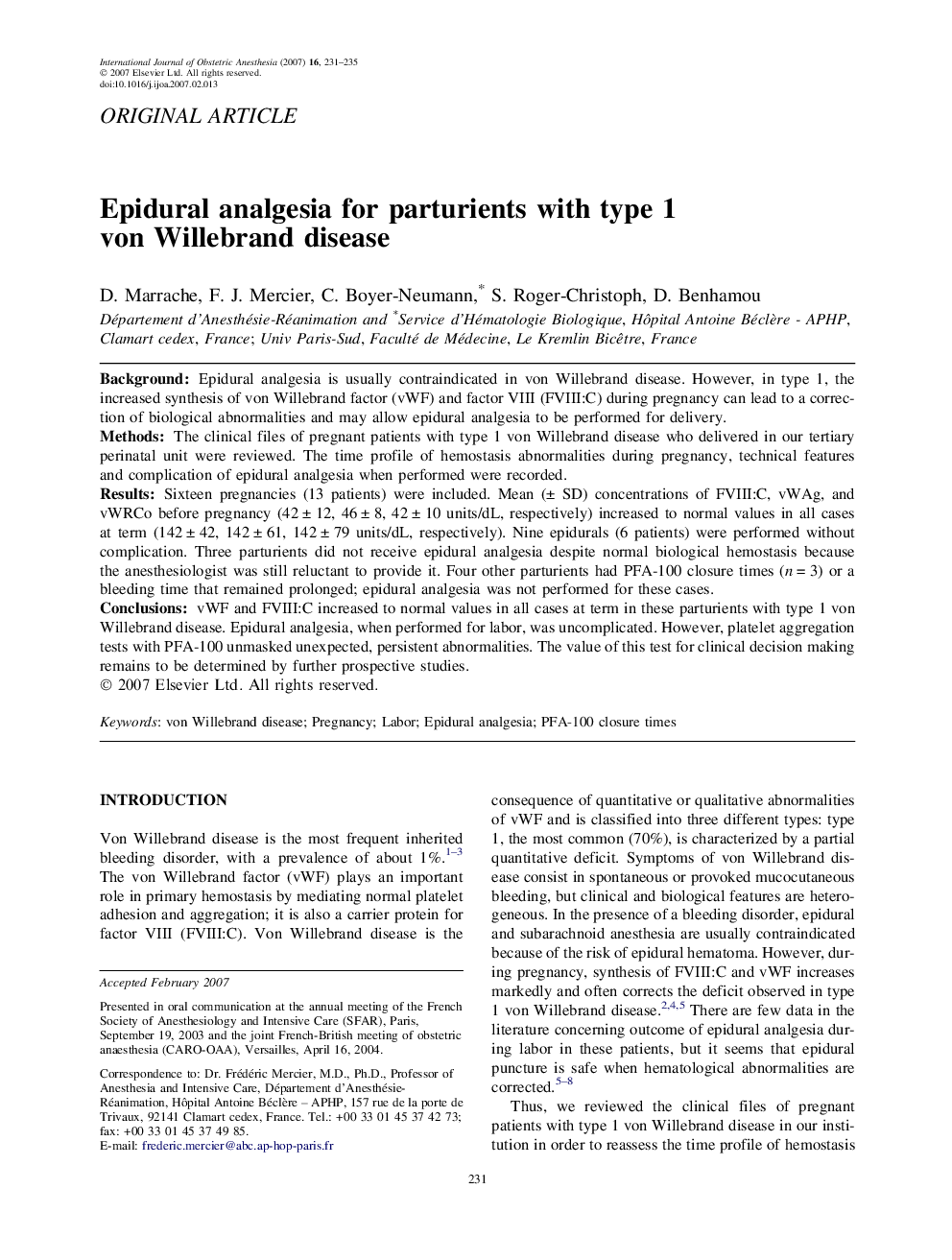| Article ID | Journal | Published Year | Pages | File Type |
|---|---|---|---|---|
| 2758588 | International Journal of Obstetric Anesthesia | 2007 | 5 Pages |
BackgroundEpidural analgesia is usually contraindicated in von Willebrand disease. However, in type 1, the increased synthesis of von Willebrand factor (vWF) and factor VIII (FVIII:C) during pregnancy can lead to a correction of biological abnormalities and may allow epidural analgesia to be performed for delivery.MethodsThe clinical files of pregnant patients with type 1 von Willebrand disease who delivered in our tertiary perinatal unit were reviewed. The time profile of hemostasis abnormalities during pregnancy, technical features and complication of epidural analgesia when performed were recorded.ResultsSixteen pregnancies (13 patients) were included. Mean (± SD) concentrations of FVIII:C, vWAg, and vWRCo before pregnancy (42 ± 12, 46 ± 8, 42 ± 10 units/dL, respectively) increased to normal values in all cases at term (142 ± 42, 142 ± 61, 142 ± 79 units/dL, respectively). Nine epidurals (6 patients) were performed without complication. Three parturients did not receive epidural analgesia despite normal biological hemostasis because the anesthesiologist was still reluctant to provide it. Four other parturients had PFA-100 closure times (n = 3) or a bleeding time that remained prolonged; epidural analgesia was not performed for these cases.ConclusionsvWF and FVIII:C increased to normal values in all cases at term in these parturients with type 1 von Willebrand disease. Epidural analgesia, when performed for labor, was uncomplicated. However, platelet aggregation tests with PFA-100 unmasked unexpected, persistent abnormalities. The value of this test for clinical decision making remains to be determined by further prospective studies.
